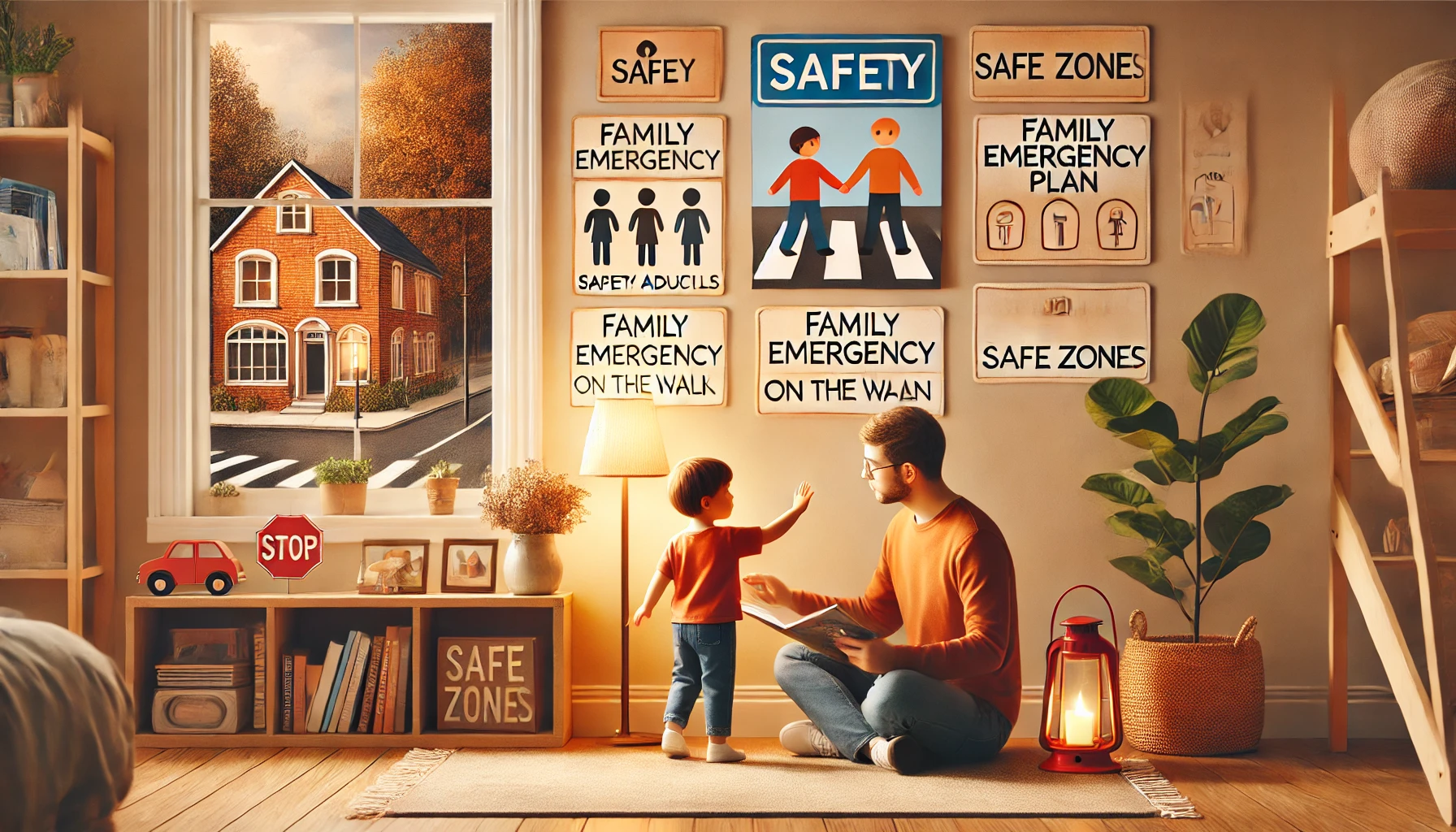Teaching young children how to stay safe gives them confidence, builds independence, and prepares them to navigate the world with awareness. While it’s important to avoid instilling fear, young kids benefit greatly from calm, clear lessons about how to recognize danger, make smart choices, and ask for help. When these lessons are taught in simple, engaging ways, they stick with kids for life.
Why Safety Education Is Essential
- Builds confidence and awareness
- Prepares children for emergencies or unfamiliar situations
- Encourages independence in a safe way
- Teaches boundaries and self-protection
- Reinforces trust in caregivers and safe adults
1. Teach Full Name, Address, and Phone Number
Start with personal safety basics.
Activity Idea:
- Create a catchy song or chant using your child’s full name, your phone number, and your address.
- Practice daily: “What would you tell someone if you got separated from me?”
- Use flashcards with pictures and symbols to help reinforce memorization.
What Kids Learn:
- Who they are and how to help someone contact you.
- That information helps them reconnect with caregivers.
- Confidence during uncertain moments.
2. Identify Safe Adults and Strangers
Help your child understand who to trust when they’re not with you.
Activity Idea:
- Talk about “safe strangers” like police officers, firefighters, teachers, or a parent with kids.
- Practice asking for help in pretend scenarios: “You’re lost in the store—who would you go to?”
- Discuss unsafe behavior without labeling people as “bad.”
What Kids Learn:
- That not all strangers are dangerous—but caution is important.
- How to identify trustworthy helpers.
- The importance of seeking help instead of hiding.
3. Establish a Family Safety Plan
Create basic plans for what to do in different emergencies.
Activity Idea:
- Practice fire drills at home with a safe meeting spot.
- Choose a family “code word” to use in emergencies.
- Talk about what to do if a doorbell rings or the power goes out.
What Kids Learn:
- That preparation helps them stay calm.
- What steps to follow in unfamiliar situations.
- Confidence through repetition.
4. Teach About Boundaries and Body Safety
Give your child the tools to protect themselves respectfully.
Activity Idea:
- Use books like Your Body Belongs to You or No Means No!
- Teach the phrase: “My body is mine, and I can say no.”
- Explain private body parts and safe vs. unsafe touch in age-appropriate terms.
What Kids Learn:
- How to assert themselves.
- That boundaries are important and respected.
- That they can talk to trusted adults about anything.
5. Practice Safety at Home and Outside
Turn everyday moments into teachable lessons.
Activity Idea:
- Say: “We hold hands near the road,” or “We don’t touch the stove.”
- Let your child practice locking doors or turning off appliances (with supervision).
- Discuss helmet use, seat belts, and walking safely near cars.
What Kids Learn:
- How to spot and avoid danger.
- That safety tools (like helmets) are for protection.
- How to stay alert in familiar spaces.
6. Use Role-Playing and Games
Make safety learning fun and memorable.
Activity Idea:
- Act out scenarios: “What do you do if the smoke alarm goes off?”
- Play “What’s the safe choice?” with different scenarios.
- Use puppets or dolls to model safety behaviors.
What Kids Learn:
- How to apply knowledge to real situations.
- That safety can be practiced like any other skill.
- The power of repetition in learning.
7. Encourage Open Conversations
Build trust so your child feels comfortable speaking up.
Activity Idea:
- Check in: “Did anything make you feel uncomfortable today?”
- Respond with calm curiosity, not judgment.
- Let your child know: “You can always tell me anything, and I’ll help.”
What Kids Learn:
- That honesty is safe and welcomed.
- How to talk through feelings or experiences.
- That they’re never alone in tough situations.
8. Praise Safe Choices
Positive feedback helps safety habits stick.
Activity Idea:
- Say: “You looked both ways before crossing the street—great job!”
- Create a “Safety Star” chart for consistent habits like buckling up or holding hands.
- Celebrate progress, even small steps.
What Kids Learn:
- That their actions matter.
- Motivation to keep learning.
- Pride in responsibility and awareness.
Final Thoughts
Teaching young children about staying safe doesn’t have to be scary—it can be empowering. Through practice, conversation, and gentle guidance, children learn to trust themselves, rely on caring adults, and navigate their world with awareness and courage. Safety isn’t just about avoiding harm—it’s about building the confidence to thrive.
